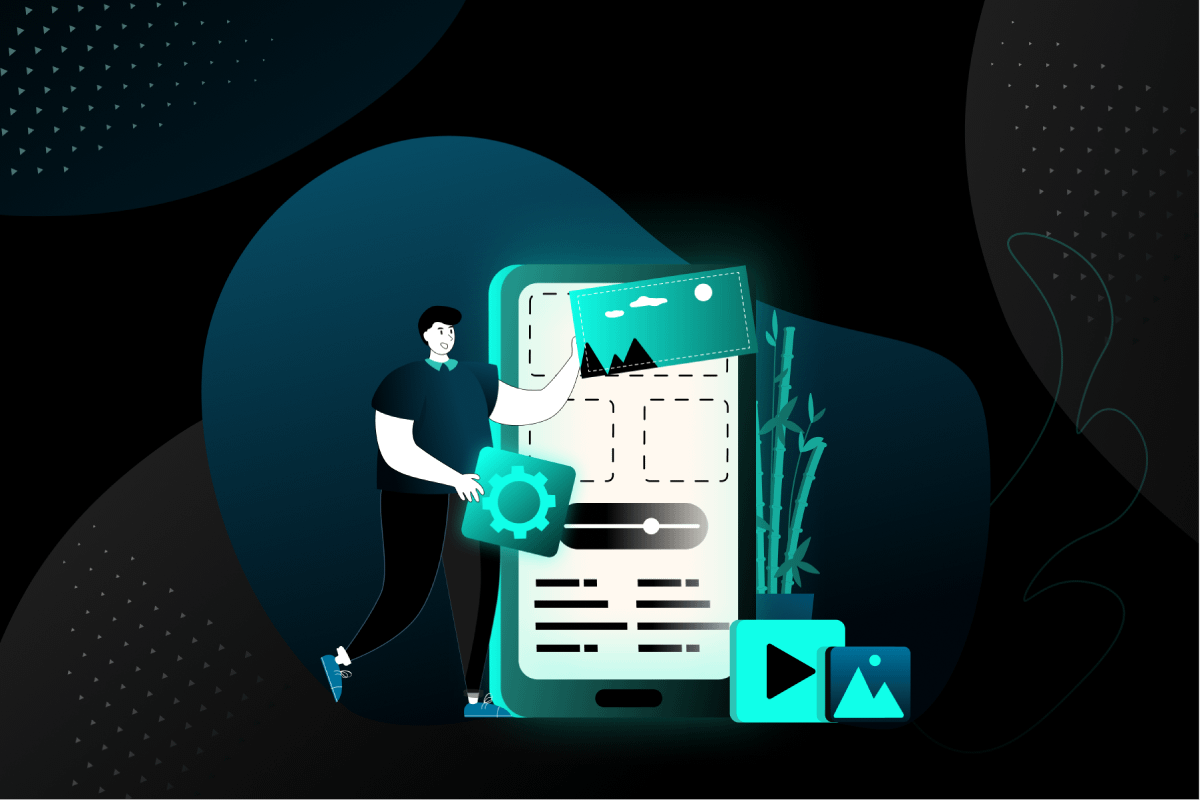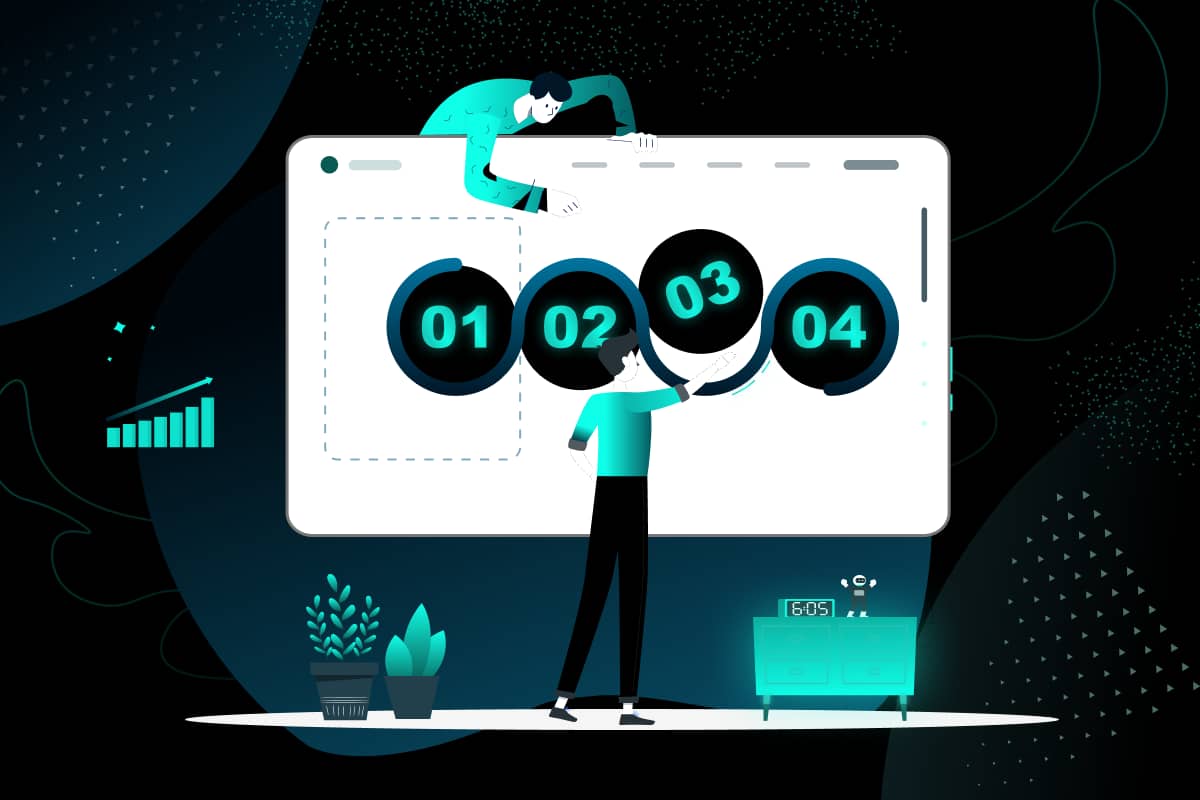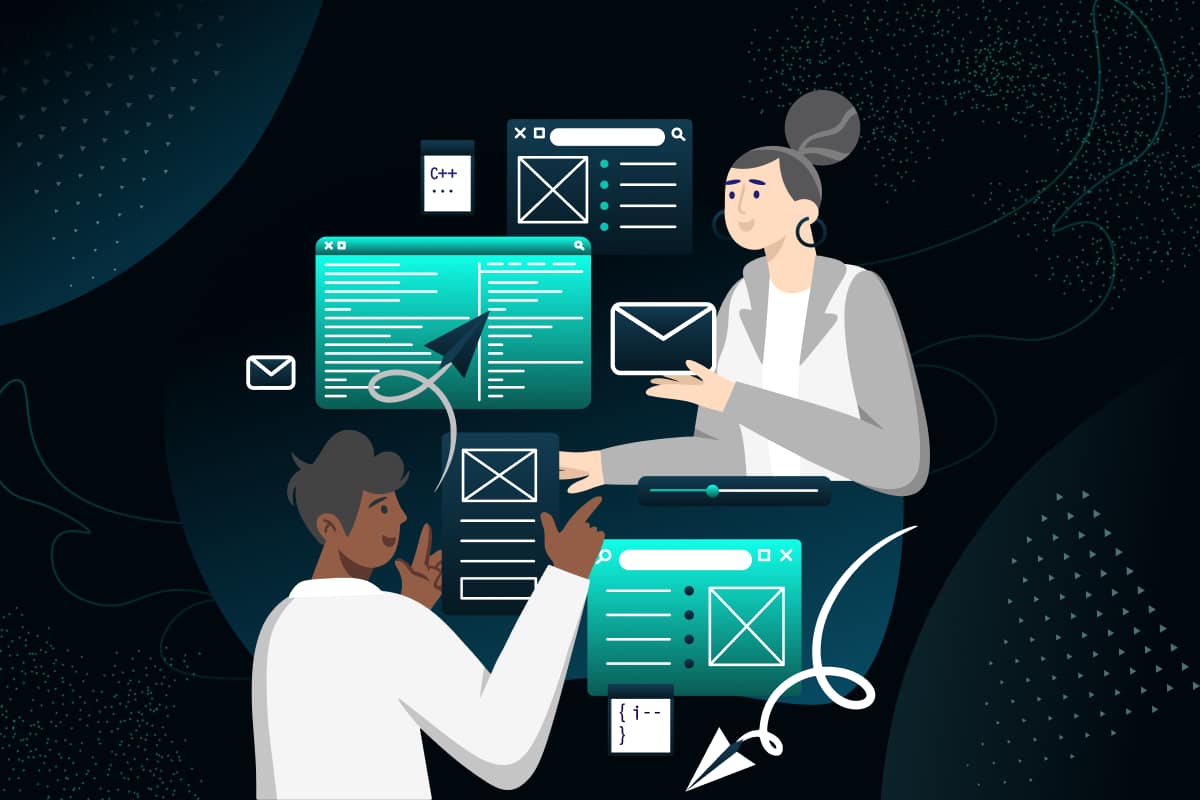Mobile app onboarding is a process that includes a number of steps a user goes through before they start using an app. The process may include providing information about the app, and telling them how to register to create an account. Once the users download the app, app onboarding is the point of interface a user has with the application.
The first impression is always the last and best impression that you can create for the users. More than 25% of the user decide to quit an app if they find that they are not getting any value from the app quickly.
In this article, we will discuss and outline the importance of app onboarding, app onboarding best practices.
Why Is App Onboarding Important for App Engagement?
Optimizing onboarding experiences can help boost user retention and engagement levels by introducing users to the app’s features in an effective and engaging way.
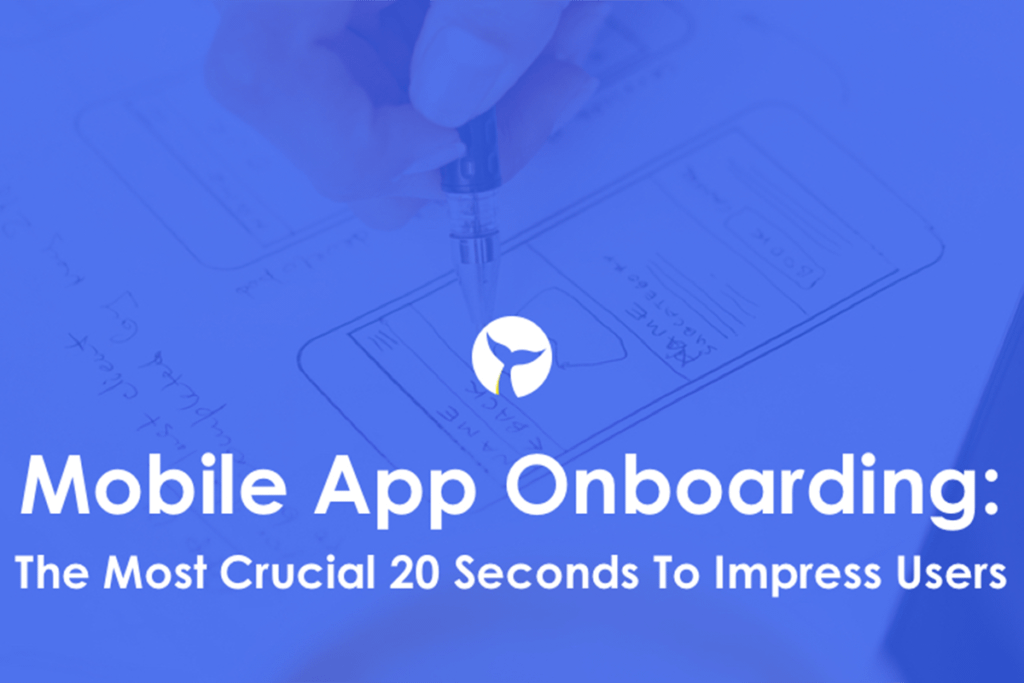
Consider a situation where you open an app with no knowledge and try to use the service. It’s difficult to understand the app and hence you may end up dropping the app with frustration. 80% of the drop is noted because of confusion.
The onboarding process ensures that users understand quickly and easily how to use the app. This will reduce frustration and create a positive experience and also helps you reduce the drop percentage. Along with this if you have great UX, you are definitely on the winning side.
You might be thinking how is app onboarding important for app Engagement?
The onboarding process helps mobile developers create loyal users who are expected to return and spread the word about it.
Mobile development is all about finding creative solutions to difficult user experience problems. By understanding the user journey developers can create an app that users will love and be willing to use repeatedly.
Onboarding is not only about educating about the app. Giving a clear picture of why they need your app will build trust in them to engage them in the app.
The context of your app should be clear to the users. We have the best example of Upland using a solid onboarding strategy which helped the company to gain more than a 50% increase in retention rate.
Common Types of Onboarding
1. Benefits-Oriented Onboarding:
This type of onboarding showcases the benefits of using the app and puts it on the frontline as a heading. When you get an insight into what you get from the app it’s obvious you think about using it.
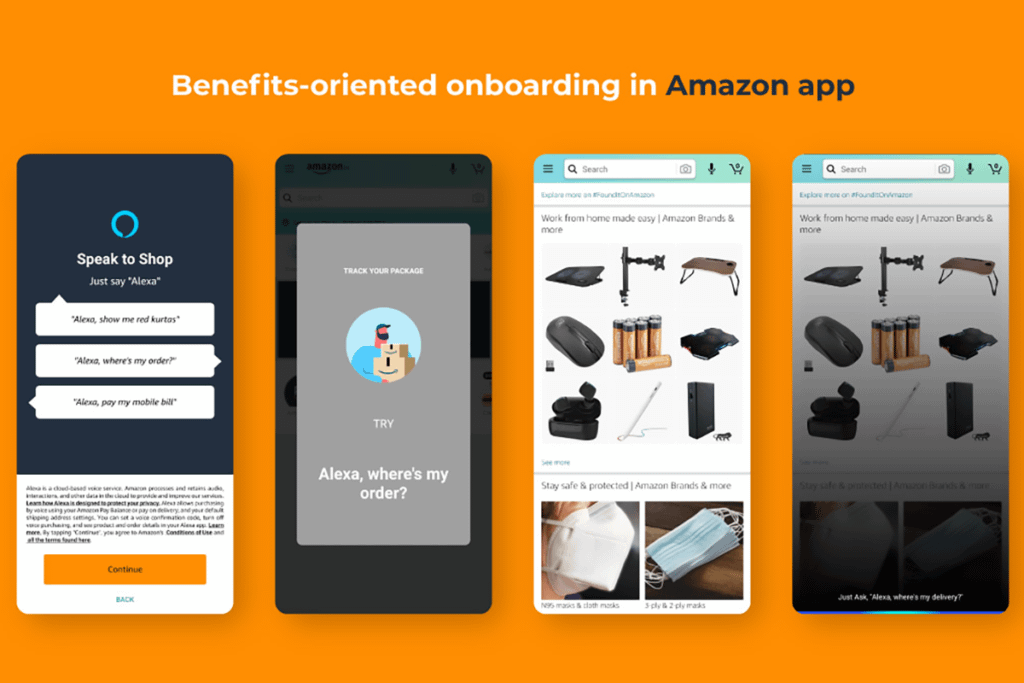
The main motto here is to boost the user to get engaged with the app.
Example: You are giving tips to reduce weight. A user who is seeking some ways to reduce weight will be attached and use your app as he sees the benefit of it.
2. Functions-Oriented Onboarding:
This shows the common features/functions present in your app. How the features work to accomplish the goals of the app are seen in depth.

A demo video could be added to show the functioning of the app’s user interface.
3. Progressive Onboarding:
The complex functions are shown in progressive onboarding. It allows users to understand the app and use new information with the flow. Users here learn as they move.
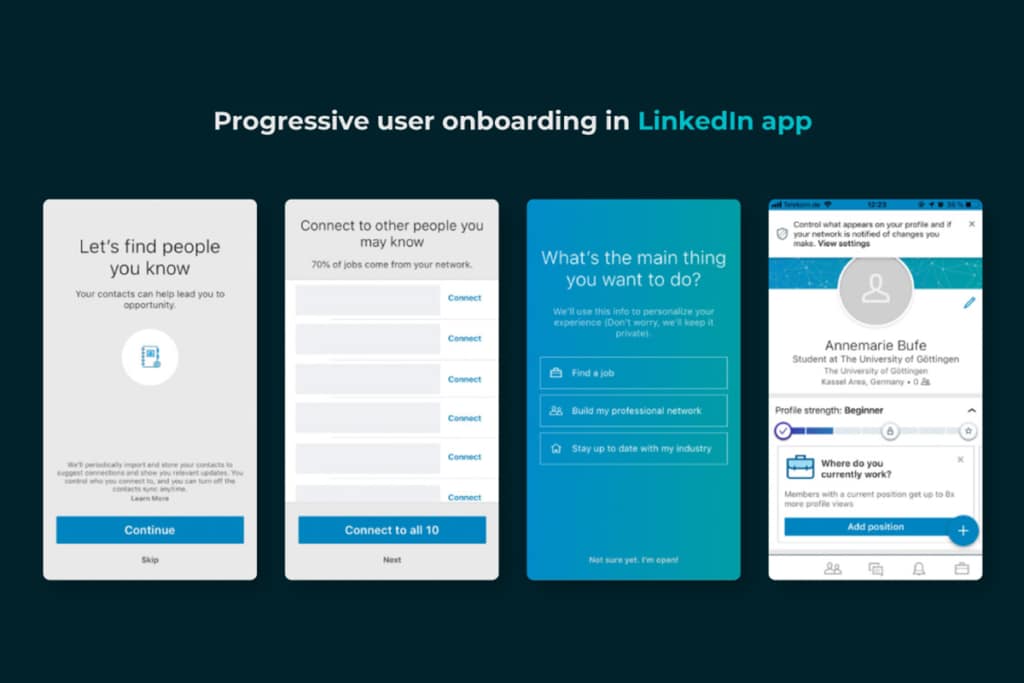
This type of onboarding goes well for apps with different functionalities and gesture-driven interactions.
App Onboarding Best Practices

There are several essential users onboarding best practices to implement if you want to make sure that users continue to use your app long after they initially load it. If you want to discover how to onboard people and maintain their loyalty, we’ll go through a few of these here.
Keep it simple and stay focused
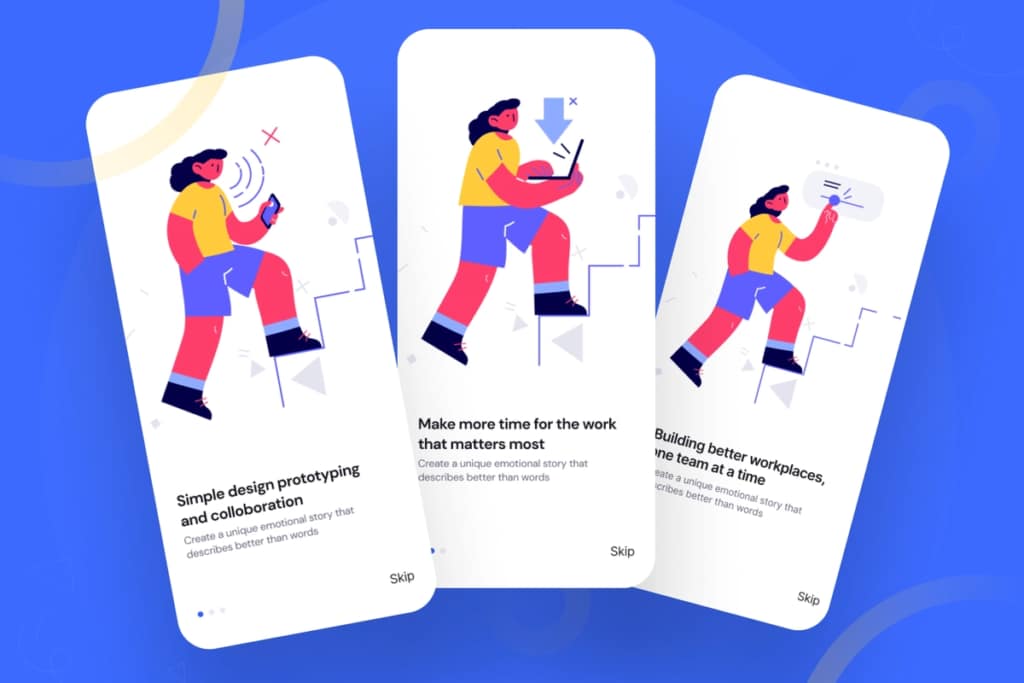
Have you ever experienced an app asking for unnecessary permissions though it is not required?
For instance, a food delivery app asking for a camera and contact access request? Feel frustrated right? So, keep it simple. If it’s a food app you just should ask for the location to deliver to doorsteps.
If the app is simple and easy to understand it is obvious that the user will decide to stay on the app. So, create a great first impression with a simple option. Don’t flush with a number of personal questions, ask only essential details and permission.
First-time users need guidance, but that does not mean you overload them with tons of information, stay focused.
Try on a Video
If you are confused about any product usage, what will you do?
I prefer to go to the video option to get things clear. I think you would do the same right? Rather than text most of us prefer visual guidance and why shouldn’t we? It gives more impact and a clear picture.

65% of users say that they jump into videos to know how to use any service or product. 97% agreed that a video can educate new customers effectively. So don’t skip this in your app onboarding process.
Skip option
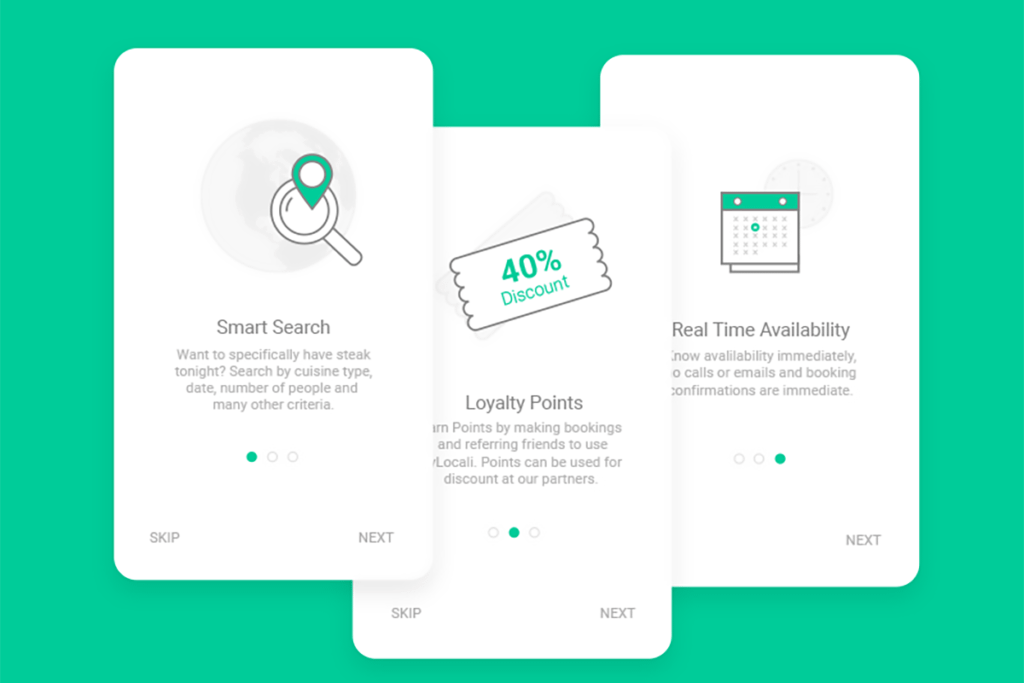
The skip option should be implemented, if you are a techie, you would probably want to skip the onboarding process and dive in to explore the app by yourself.
So if you are guided with too much information being a tech you may quit the app. So, do consider this practice.
There are examples where we can see an increase in the logins by 10 to 15%. You can test your app onboarding flow and check what performs best for your user base.
One of the best examples is the music app VEVO.
Use multiple channels
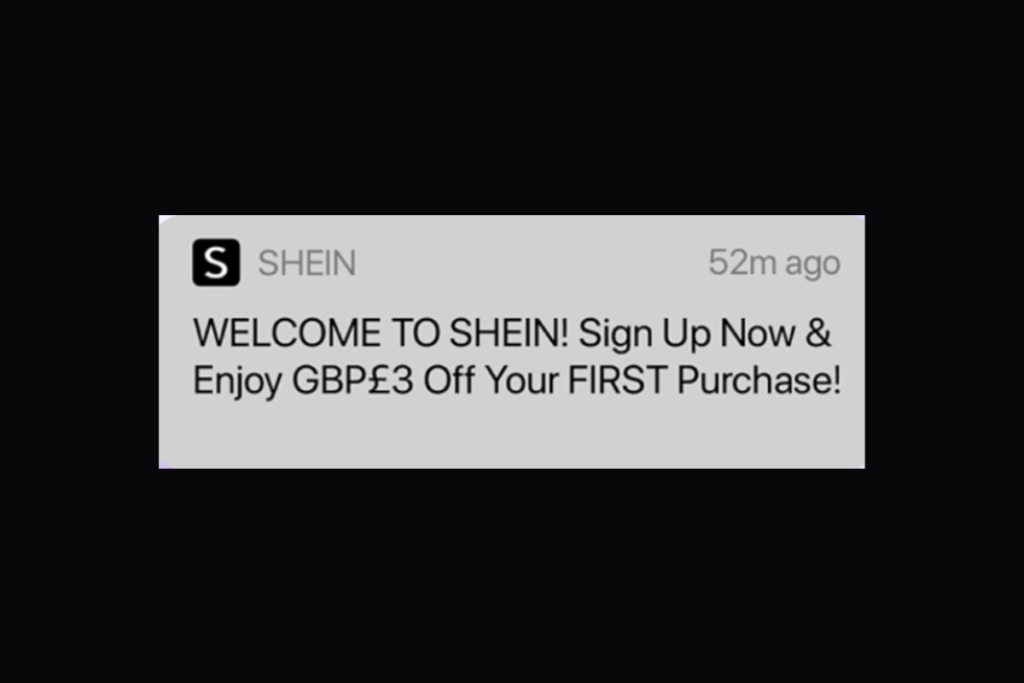
In-app engagement works well but instead of limiting onboarding to it try to engage users on different channels, this helps to bring the user back to the app as well. Take advantage of social media, push notifications, SMS, and enticing emails. No matter what channel you are using, all onboarding messages must be direct and simple.
Remind the user to complete the registration, this personalization based on the recent status of the user could work great for your app onboarding flow.
Remember: Don’t spam with tons of messages.
Example: SHEIN sends you a push notification and offers to save money on spot. This will make any new user happy since he doesn’t have to stray far for this option.
Maintain data transparency
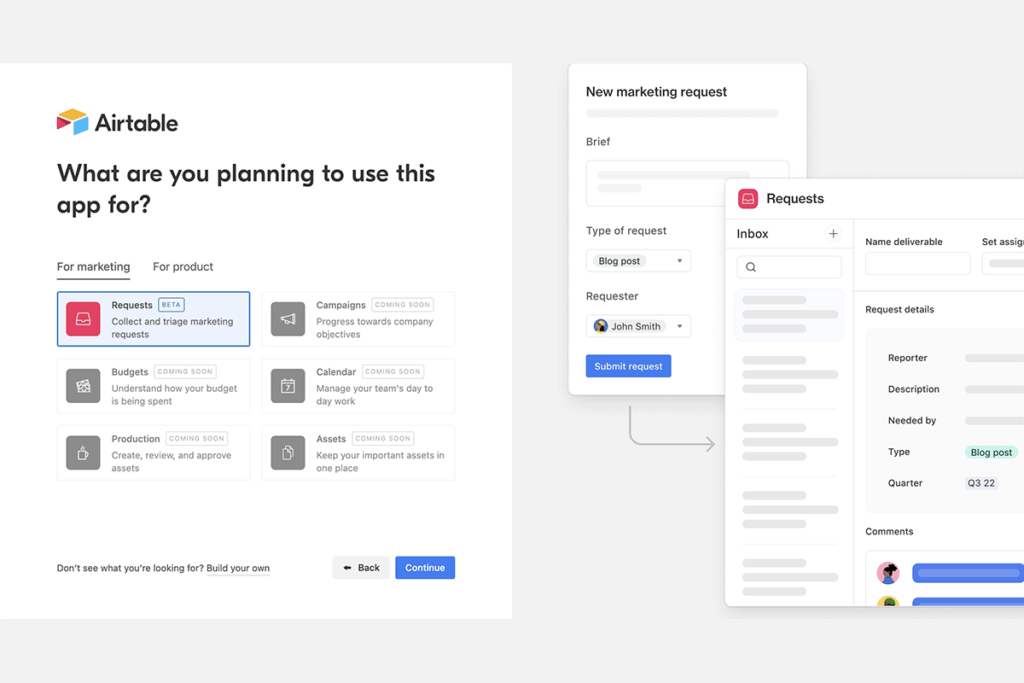
Maintaining data transparency throughout your onboarding process is important. What data do you need and why do you need it? For instance, if you have a food app and you are asking for addresses, make it clear that you are asking for the customers’ addresses to locate restaurants near them.
Don’t make the customer feel that you are forcing them for data. Explain the reason while asking for data.
Show the value on the spot
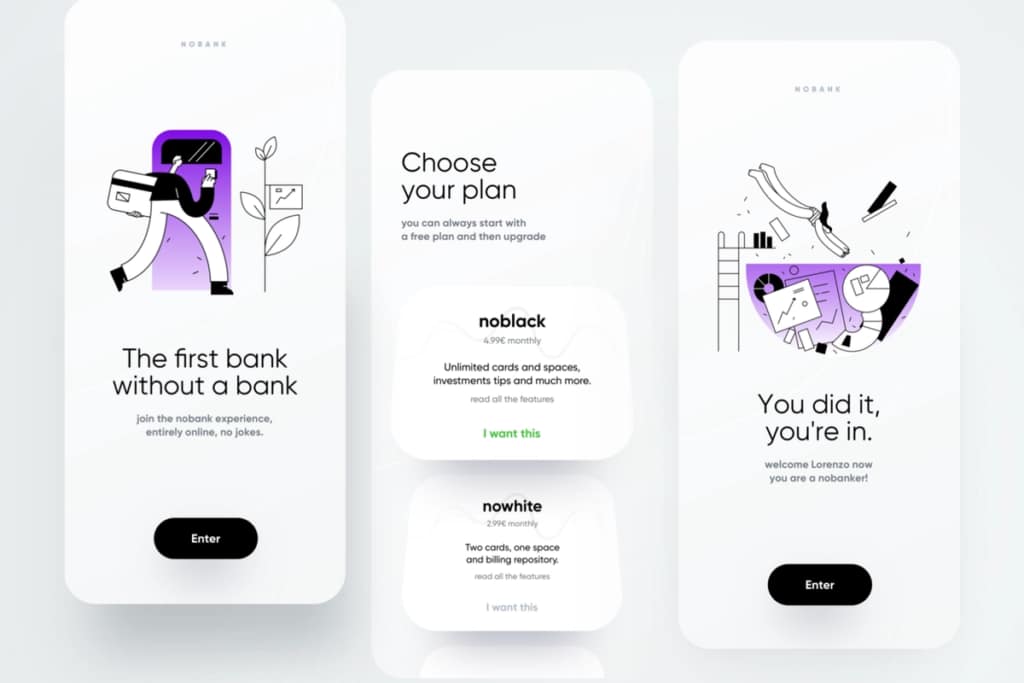
No one downloads an app without reason simply to spam their phone memory. There will be a reason, right? The onboarding process should show that your app will full fill their expectations.
When your customers know that they are getting for what they have downloaded the app, they will stay back on the app. So, focus on benefits.
Incentives make everyone happy: use this trick
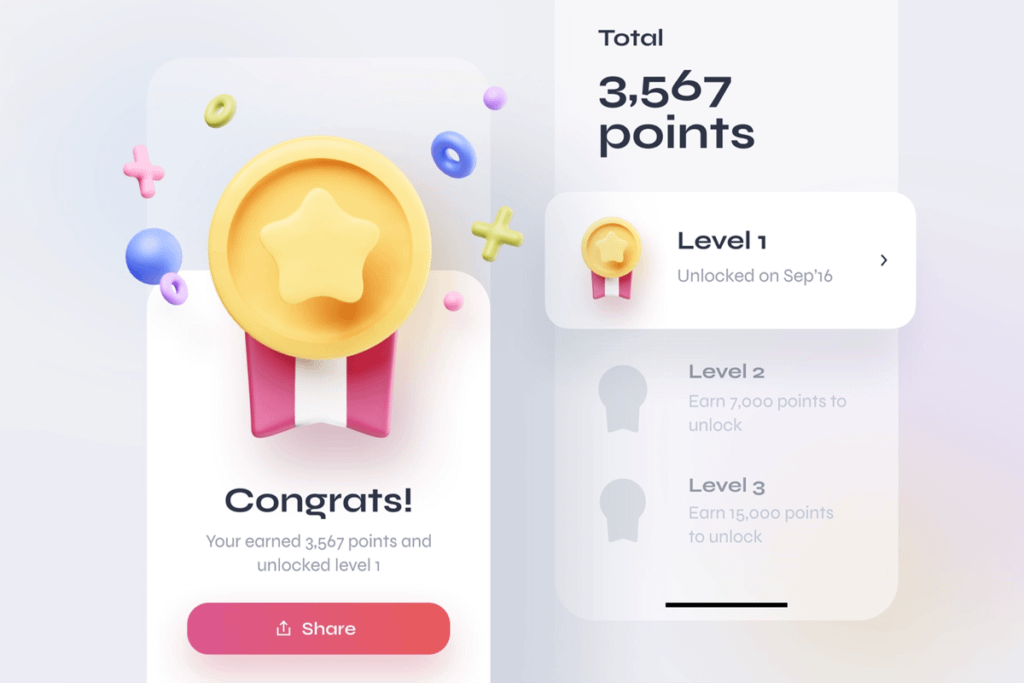
When you get an offer code, free shipping, and access to some feature which is only for first-time users? You will be happy, right?
Once the user downloads the app and completes of simple onboarding flow like selecting paid subscription or making their first purchase, offer them an offer code for future use, make their delivery free, or any other incentives.
This will help retain your user.
App onboarding examples from the fastest growing apps
Use these app onboarding examples from the hottest applications of today as inspiration in addition to onboarding best practices to successfully engage and retain new users.
UberEats
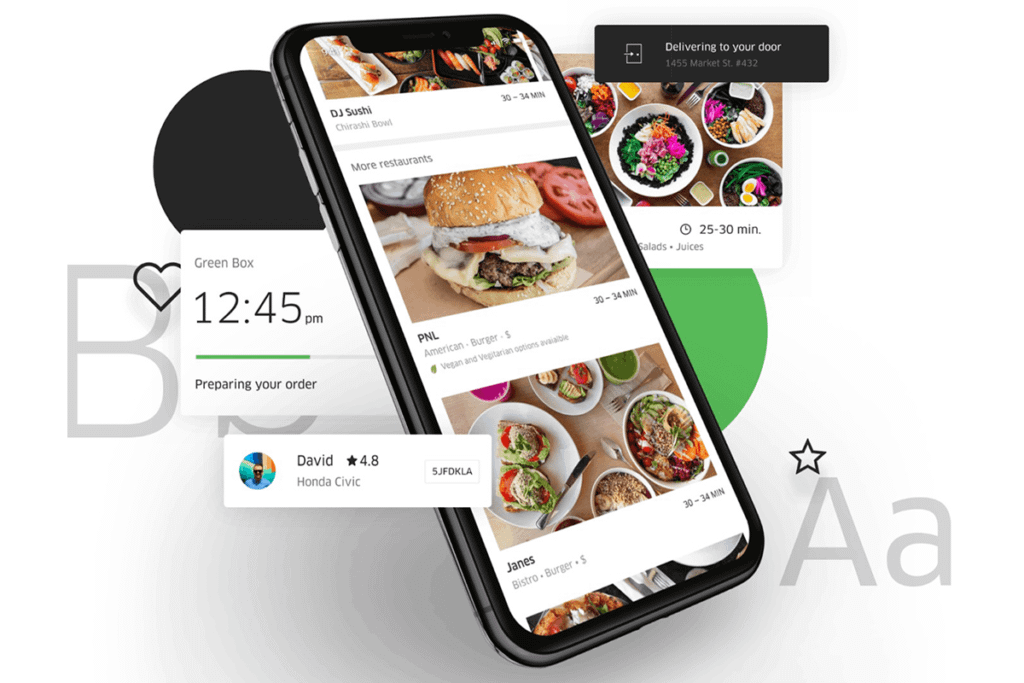
UberEats knows what their user wants. What you expect from a food app is obviously fresh food. UberEat has a simple yet effective onboarding flow to place the first order.
They collect the essential details only -which are location and address. They deliver food quickly and same time avail offers for next time.
MailChimp
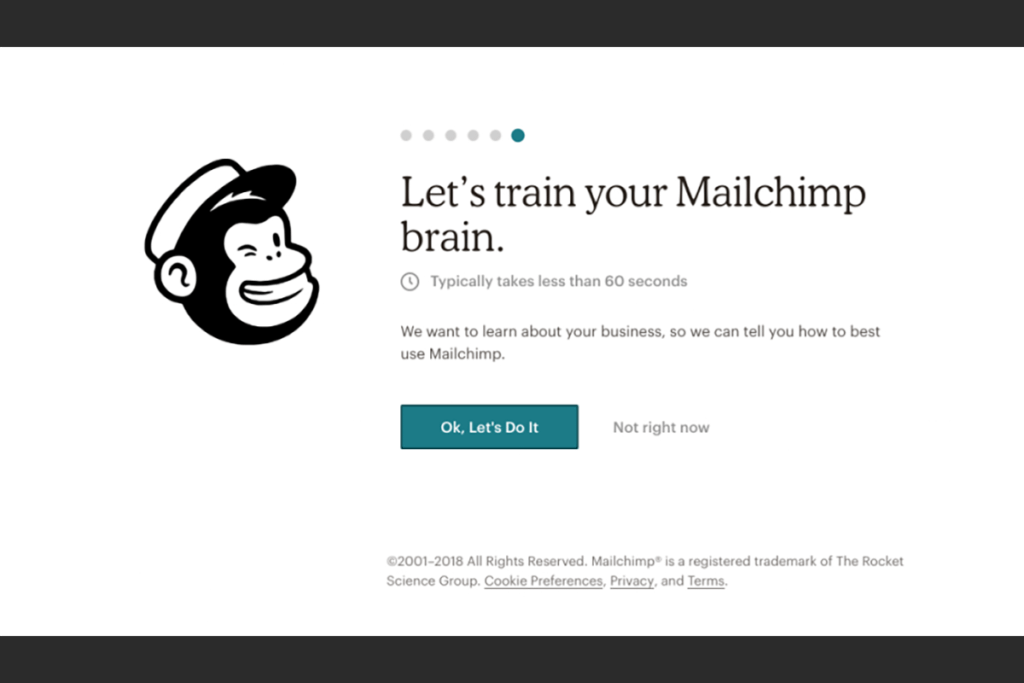
Mailchimp is an email marketing automation app. This is another classic example that we can’t miss mentioning. This allows skipping the tour button in the beginning stage of the onboarding flow.
Mailchimp’s onboarding UX has a skip option on every step. Once you feel you can use the app you can skip and use the app easily.
YouTube Music

Who doesn’t like to try anything for free before they purchase it? Exactly youtube has taken this seriously and provides a free trial button that helps in promoting users to log in later automatically if they like it.
Is app onboarding necessary?

Yes, it is.
Onboarding helps your user understand the app quickly and easily. It is important for mobile app onboarding to be simple as it will help reduce the amount of time and effort taken by the user to use it.
Ultimately, mobile app onboarding should make it easy for new users to understand how your app works and provide them with a great experience that keeps them coming back for more.
Personalized onboarding experiences engage the user with the app and help in retaining them for a longer time.
App onboarding is an essential part of the app development cycle, allowing app developers to provide users with a personalized journey in learning how to use their app.
App onboarding also helps app developers create a more integrated experience for app users by helping them set up their accounts and profile, adjust app settings, and create personalized content.
In doing so, app developers can create an engaging app with high user retention rates.
Leveraging onboarding strategies can also help reduce user frustration and increase user satisfaction, resulting in higher user retention rates.
Again, the value of onboarding to an app’s success cannot be understated.
Conclusion
Your user onboarding strategy can be influenced by keeping these and other app onboarding best practices in mind, but it’s crucial to keep in mind that each app will have different needs. Some techniques might be better to apply than others depending on the specific requirements of your app. Everything relies on the kind of app you’re making and the requirements of the users who will use it.
You’ll eventually figure out what works and what needs to be improved to speed up the process. You’ll be able to retain more users and effectively introduce them to your app with a fully working app onboarding UX. By doing this, you can ensure that your app stands out from competing ones that offer less user-friendly user interfaces and experiences overall.
You can also contact us to fuel your app’s success.

